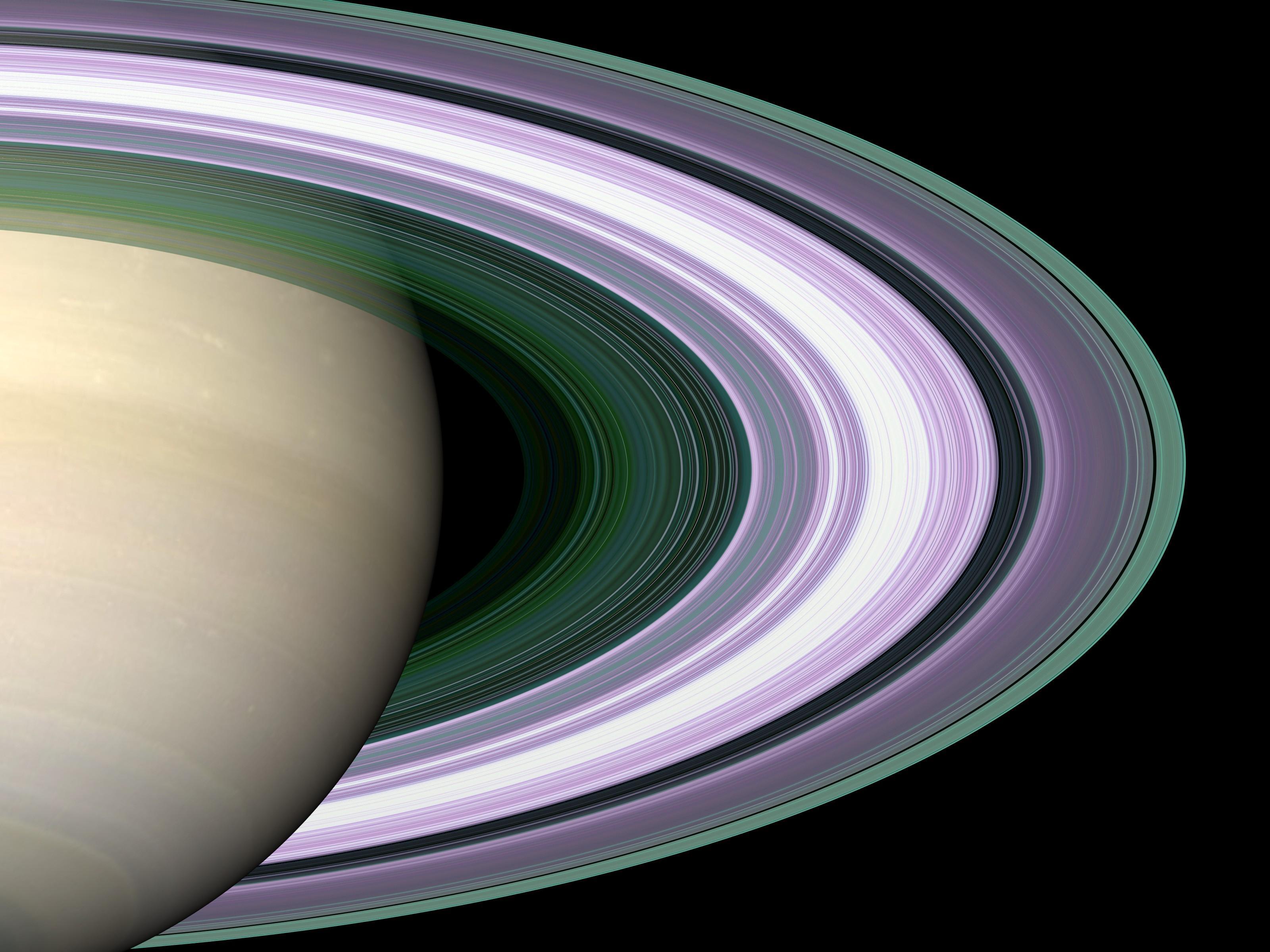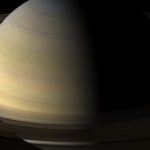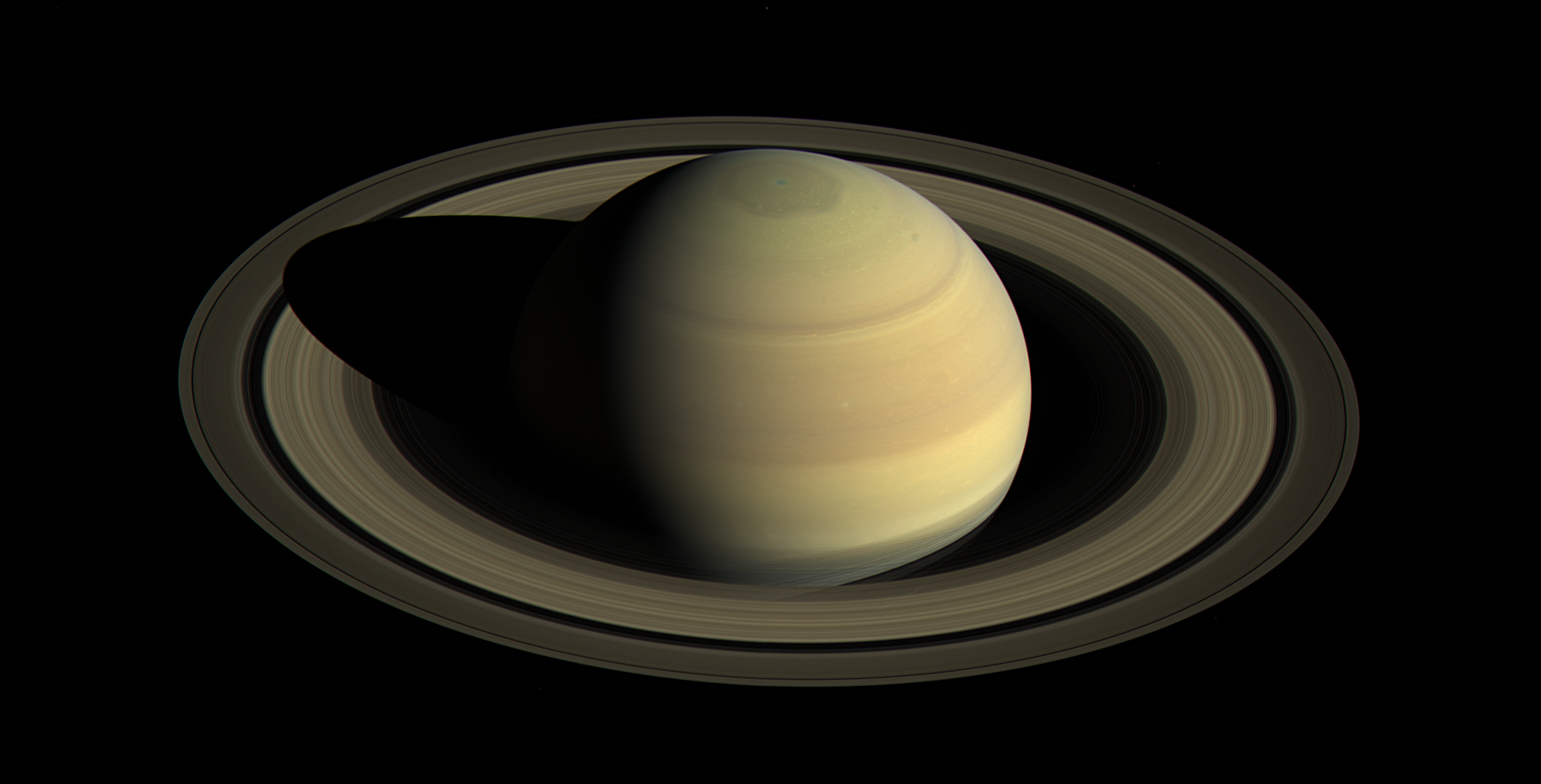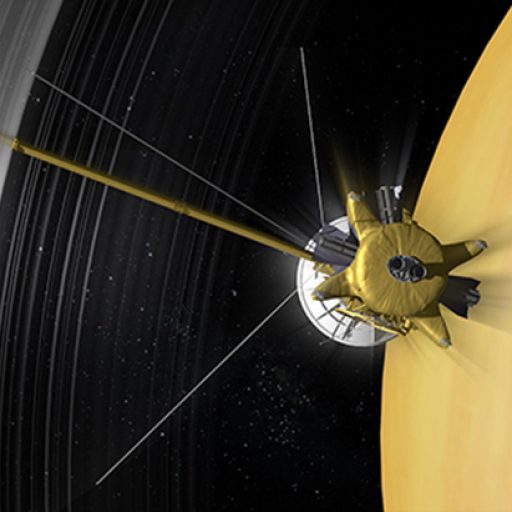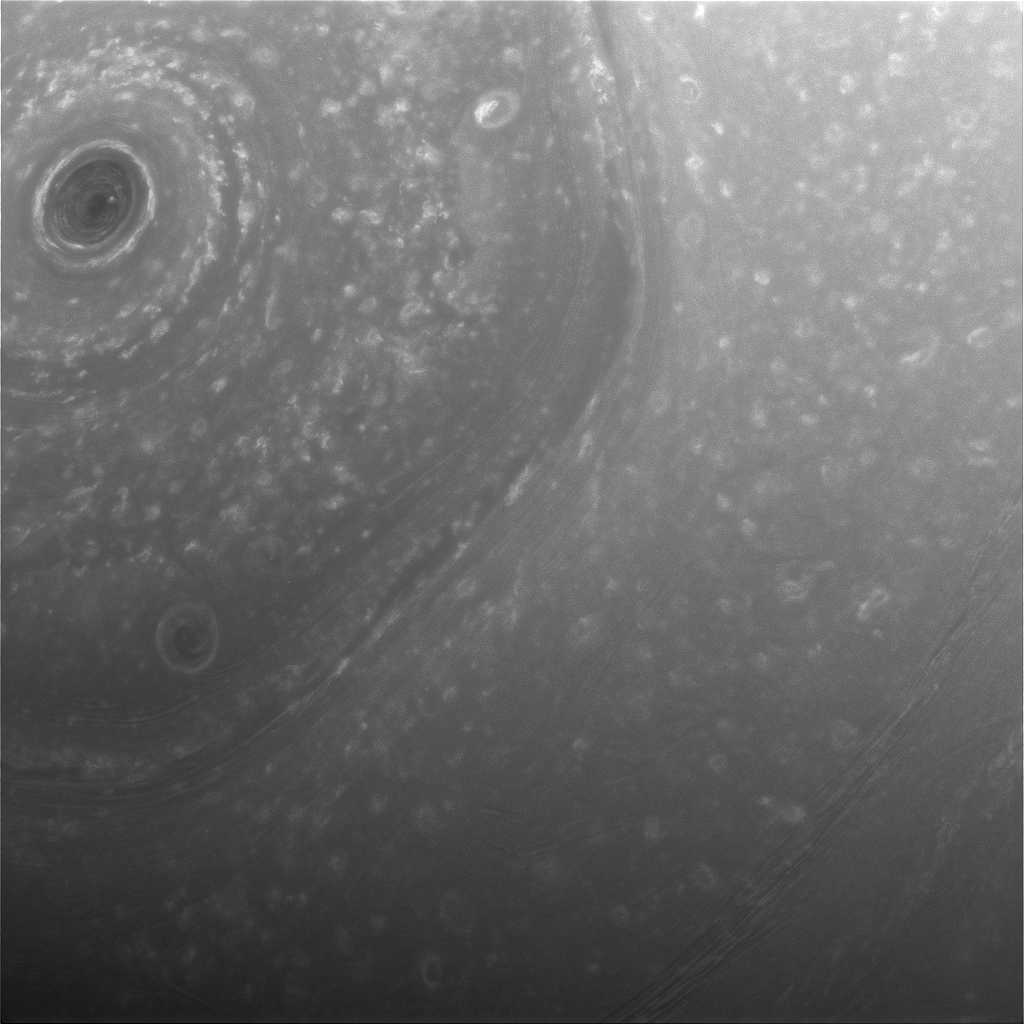In this simulated image of Saturn’s rings, color is used to present information about ring particle sizes in different regions based on the measured effects of three radio signals. Three simultaneous radio signals of 0.94, 3.6 and 13 centimeter wavelength (Ka-, X- and S-bands) were sent from the Cassini spacecraft through the rings to Earth. The observed change of each signal as Cassini moved behind the rings provided a profile of the distribution of ring material as a function of distance from Saturn, or an optical depth profile. Image Credit: NASA/JPL
この土星の環のシミュレーション画像は、3種類の無線信号により測定した土星の環を作っている粒子の大きさを色分けして表しています。0.94、3.6および13センチメートルの波長(Ka-、X-、S-バンド)の3種類の無線信号はカッシーニ探査機から土星の環を通して地球に送られてきました。カッシーニが土星の環の後方を移動する際に観測されたそれぞれの変動は、環の物質構成情報を土星からの距離や光学的な深度の関数で表すことができます。
オリジナル記事:Saturn: Rings
訳者注
土星の環についてまとめています。
環をしめすアルファベットは位置の順ではなく、発見順に付けられていますので名前だけではどこの環なのか分かり難いです。
カッシーニの撮影した以下の土星の環の画像でご確認ください。
記事本文
The rings of Saturn have puzzled astronomers since Galileo Galilei discovered them with his telescope in 1610. Detailed study by the Voyager 1 and Voyager 2 spacecraft in the 1980s only increased the mystery.
There are billions of ring particles in the entire ring system. The ring particle sizes range from tiny, dust-sized icy grains to a few particles as large as mountains. Two tiny moons orbit in gaps (Encke and Keeler gaps) in the rings and keep the gaps open. Other particles (10s to 100s of meters) are too tiny to see, but create propeller-shaped objects in the rings that let us know they are there. The rings are believed to be pieces of comets, asteroids or shattered moons that broke up before they reached the planet. Each ring orbits at a different speed around the planet. Information from NASA’s Cassini mission will help reveal how they formed, how they maintain their orbit and, above all, why they are there in the first place.
While the other three gas planets in the solar system — Jupiter, Uranus and Neptune — have rings orbiting around them, Saturn’s are by far the largest and most spectacular. With a thickness of about one kilometer (3,200 feet) or less, they span up to 282,000 km (175,000 miles), about three quarters of the distance between the Earth and its Moon.
Named alphabetically in the order they were discovered, the rings are relatively close to each other, with the exception of the Cassini Division, a gap measuring 4,700 km (2,920 miles). The main rings are, working outward from the planet, known as C, B and A. The Cassini Division is the largest gap in the rings and separates Rings B and A. In addition a number of fainter rings have been discovered more recently. The D Ring is exceedingly faint and closest to the planet. The F Ring is a narrow feature just outside the A Ring. Beyond that are two far fainter rings named G and E. The rings show a tremendous amount of structure on all scales; some of this structure is related to gravitational perturbations by Saturn’s many moons, but much of it remains unexplained.
To enter Saturn’s orbit, Cassini flew through the gap between the F and G rings, which is farther from the planet than the Cassini Division. As a safety measure, during the crossing of the ring plane, instruments and cameras onboard the spacecraft were shut off temporarily. However, the spectacular crossing into Saturn’s orbit brought incredible information, images and footage. The instruments onboard Cassini are still collecting unique data that may answer many questions about the rings’ composition.
Reference: USGS Astrogeology: Gazetteer of Planetary Nomenclature — Ring Nomenclature
日本語訳
土星の環は、ガリレオ・ガリレイが1610年に彼の望遠鏡でそれらを発見して以来、天文学者たちを悩ませ続けています。1980年代のボイジャー1号とボイジャー2号の探査機による詳細な調査は、謎を深めることにしかなりませんでした。
土星の環は十億個の粒子からできています。環の粒子の大きさは、小さいものでは塵のように小さな氷の粒から、大きいものでは山のように大きな粒子がいくつかあります。土星の環の間隙(エンケとキーラー間隙)の軌道上にある2つの小さな衛星は、間隙の空間を維持する役割を担っています。他の粒子(数10から数100メートル)は小さすぎて見ることはできませんが、プロペラが回転しているような状態となり、それらが土星の環に存在していることをわからせてくれます。土星の環は、土星に到達する前にバラバラになった彗星、小惑星や衛星の残骸であると考えられています。各環は、土星の周囲を異なる速度で周回しています。 NASAのカッシーニ探査機からのデータは、土星の環がどうしてできて、どう自らの軌道を維持し、その上に、なぜ最初の場所にあるのか、といったことを明らかにするのに役立ちます。
太陽系内の他の3つのガス惑星 – 木星、天王星と海王星 – は、夫々の周りを周回する環を持っていますが、土星の環は、その中でも最大かつ最も壮麗なものです。厚さは約1キロ(3,200フィート)以下で、範囲は282,000キロ(175,000マイル)もあり、地球と月の間の距離の4分の3に及びます。
土星の環は発見された順にアルファベット順で命名され、夫々の環は4,700キロ(2,920マイル)のカッシーニ間隙を除いて、互いに比較的近接しています。主な環は、土星から離れていく方向に向かってC環、B環およびA環となります。カッシーニ間隙として知られている最大のギャップはB環とA環を隔てて存在しています。加えて近年になり、より暗い環も幾つか発見されています。D環はとても暗くかすんだ環で、最も土星の近くにあります。F環は、狭い環でA環のすぐ外側にあります。その向こうにG環とE環という2つのはるかに暗い環があります。土星の環は、すべてのスケールで膨大な量の物質で構成されていて、このいくつかは、土星の多くの衛星による重力摂動に関連していますが、その多くは依然謎のままです。
土星の軌道に入るために、カッシーニは、カッシーニの間隙よりも土星の外側にあるF環とG環の間を通って飛行しました。安全対策として、環の平面を超える間は、探査機に搭載している機器とカメラを一時的にシャットダウンしました。しかし、土星の周回軌道上からは信じられないほどの情報、画像や映像をもたらしました。カッシーニに搭載した機器は、今でも土星の環の組成についての多くの疑問に答えることができるユニークなデータを収集しています。
